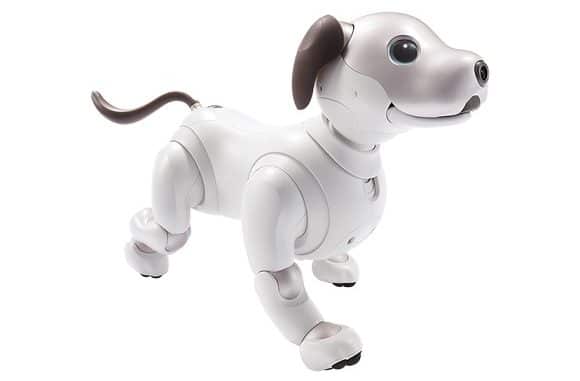
Views: 172
As with other mammals the isolated man does not survive, the company of humanoids or animaloids contributes to mental health.
Minapim by Hernan Valenzuela: Since the cave period, man has been searching for ways of comfort and adaptation to the environment. Having met the basic needs, he feels the need to fit into a social core, to belong to a group and to interact and exchange thoughts and emotions. The continuous change in social core, routines and cultural habits has led to social isolation for the elderly, people with special needs and those who simply do not have an active role in society. Humanoides and Animaloides emerge as a supportive tool for emotional balance.
Robots originally designed for industrial use reach important space by becoming Humanoides or Animaloides. Several initiatives are already in full swing and some are in the commercialization phase.
Social Robots are friends and assistants and are making room in our lives.
In industry and medicine, robots build, complement man’s activities, routinely share and inspect events; They also help significantly in some surgeries and distribute prescription drugs.
“Social” robots are designed to engage with people and create an emotional connection, don’t expect them to behave like cartoon characters. Either way the humanoid or animaloid robots will be more sophisticated and take up more space in the man’s routines.
What’s behind the “emotional robot” concept ?
The use of AI is a basic condition for a humanoid or animaloid robot in the handling of information by cameras or sensors. Sensitivity to external events, such as heat, voice pitch, vibration, light incidence and touch, constitute the input information to form the idea of emotional and social intelligence, in a process analogous to human behavior of interpretation of thoughts and feelings.
The use of AI has enabled designers to interpret psychological and neurological perceptions in algorithms that allow robots to recognize voices, faces and emotions, speech interpretation and gestures, and thus respond appropriately to complex verbal and nonverbal signals, to eye contact and its adaptation to the environment. In living with people, robots learn from reactions, rewards and criticism.
Pepper is a 47-inch humanoid (from SoftBank Robotics), recognizes basic human faces and emotions, and engages in dialogue through a touch screen on his “chest”. It already has about 15,000 Peppers worldwide, performing services such as hotel check-ins, airport customer service, shopping assistance and fast food check-out.
Temi (from da Temi USA) Google’s Artificial Intelligence technology and Loomo (Segway Robotics) are the next generation of personal assistants – such as the more mobile Amazon Echo and Google Home, offering a new level of functionality. Loomo, for example, is not only a companion, but can also turn the controller into a transport scooter, providing extra skill in an outdoor environment.
Social robots have a special application to support the growing elderly population. The Baby-like PARO Therapeutic Robot (developed by Japan’s National Institute of Advanced Industrial Science and Technology) aims to stimulate and reduce stress for Alzheimer’s patients and other patients in care facilities. He responds to your name by shaking his head and cries for stroking.
Mabu (Catalia Health) is dedicated to patients, particularly the elderly, as a wellness assistant, reminding them to call family members, go for walks and take medication. The toy industry already exploits humanoid and animaloid robots. The expected success did not meet expectations: incorporating social behavior into toys, eg Hasbro’s Baby Alive and Sony’s AIBO robotic dog.
The new versions of AIBO feature sophisticated speech and gesture recognition, can be taught tricks and develop new behaviors based on previous interactions. By 2025 more than 65 million robots per year are expected to be sold. It may seem daunting since some projects like Jibo and Anki have failed. As with every cycle, a new wave of robot waves tries to take over the open commercial space. BUDDY (Blue Frog Robot ics), a big-eyed mobile gaming device, acts as a personal assistant and provides home automation and security.
Embedded solutions in humanoid and animaloid robots, and other developments are on a list of 10 Technologies considered emerging this year 2019, by an international committee of leaders of technology experts. (WEC World Economic Forum)
An emerging technology highlighted in the report will allow you to teleport virtually to a distant location and really feel the handshakes and hugs of other cyber travelers.
A biosystem can identify the source of a food poisoning outbreak within seconds; resistant and biodegradable plastics that can be formed from useless plant waste; tiny lenses that will make way for tiny cameras; DNA-based data storage systems will reliably store large amounts of data; and other solutions taken as science fiction.
The technologies mentioned below have the potential to deliver major benefits to societies and economies, if applied responsibly. The cycle of permanent change will continue, bringing new challenges to man.
1- Bioplastics for a circular economy
2- Social Robots
3- Small Lenses for Thumbnail Devices
4- Cluttered Proteins as Drug Target
5- Smarter Fertilizers and Precision Farming
6- Collaborative Telepresence
7- Advanced Food Tracking and Packaging
8- Safer Nuclear Reactors
9- DNA data storage
10- Renewable Energy Utility Scale Storage
Sources: WEC / AIBO / TEMI / Paro / Sofbank
Leave a Reply